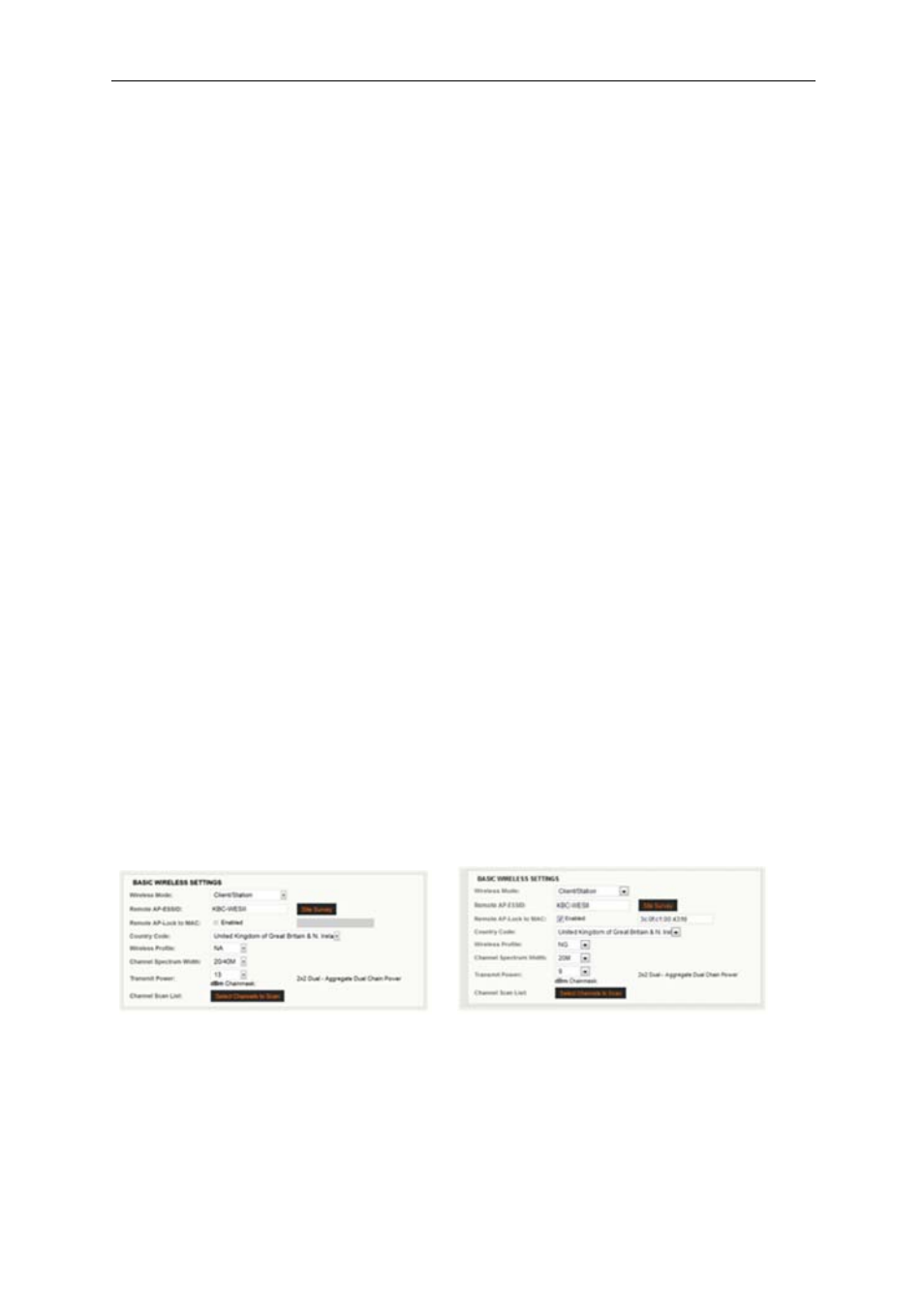KBC Networks WESII User Manual
Page 129

WESII User Manual
Manual-WESII-Rev1403
Copyright © KBC Networks 2014
Page 128 of 140
www.kbcnetworks.com
Wireless Mode: The Wireless Mode shows whether the unit is either an Access
Point/Host or a Client/Station unit.
Local AP-ESSID: This is the area in which the SSID is configured if a custom SSID is
desired.
Remote Client-Lock to MAC: Point-to-point Host/APs will only connect to one Client. If
the Host/AP is meant to connect with a WESII Client, enter the Client’s MAC Address in
this location on the Host unit. The Client will also need to know the Host/AP MAC
address. This can be determined by selecting the <Site Survey> button on the Client
unit and then selecting the MAC address of the Host/AP unit from the list, this will
automatically put the MAC address into the Remote Client –Lock to MAC field Multipoint
Host/APs do not require the MAC lock. Ptmp Host/APs will connect to any WESII Client
using the same SSID and Country Code. To specify a particular group of Clients to
associate with a particular Ptmp Host/AP, set the group to the same SSID and record all
configuration changes.
Hide SSID: If the SSID should not be broadcast for other Clients to see it can be hidden
by selecting this box. The AP’s MAC address will still appear in AP lists but will not show
the SSID.
Country Code: Select the country in which the system will be deployed. The radio will
then transmit under the legal operation for that particular regulatory domain. Any
restricted channels will no longer be available for static selection and power output will
also be tailored to the regulations of the local country. If using an external antenna, use
only the power output regulated per dB gain of the antenna.
Note:
A Country Code selection is not require for North America
Wireless Profile: Depending on the unit you have purchase this will either be:
‘NA’ to show that the system is working to IEEE802.11a and IEEE802.11n specifications
(5Ghz operation and using MIMO technology).
‘NG’ to show that the system is working to IEEE802.11g and IEEE802.11n specifications
(2.4GHz operation and using MIMO technology).
‘NY’ to show that the system is working to IEEE802.11y and IEEE802.11n specifications
(4.9GHz operation and using MIMO technology).